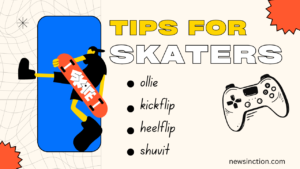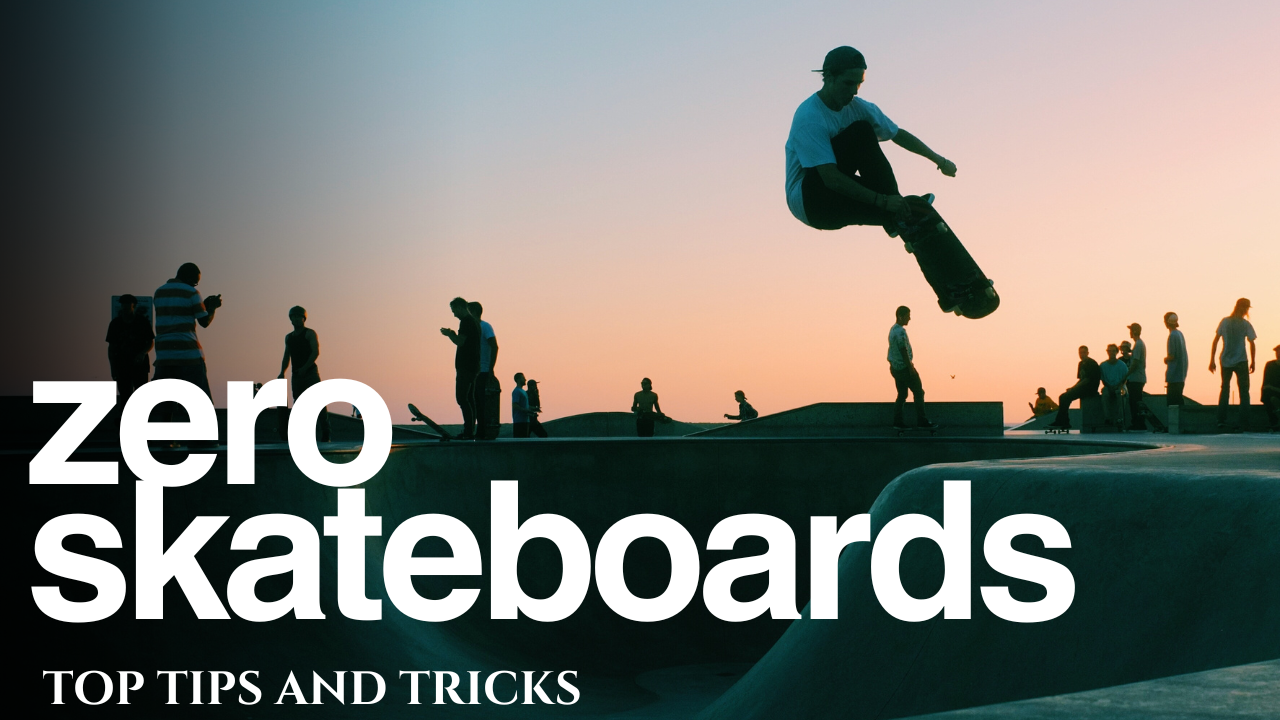Skateboarding has transformed into an art form with techniques and tricks that push the limits of what’s possible with skateboards. Zero Skateboards, known for its premium decks and connections with many famous skaters, is the ideal platform to learn and practice tricks. This article focuses on the accurate tricks and methods associated with Zero Skateboards, offering insights on improving your knowledge and skating abilities.
A Legacy of Zero Skateboards
Before you dive into the tips and tricks, it’s essential to comprehend the history of Zero Skateboards. It was founded in the name of skateboarding icon Jamie Thomas. Zero Skateboards is known for its challenging boards and dedication to the development of street skates. Zero Skateboards has been an essential player in skateboarding, and a list of competent skaters has pushed the boundaries of skateboarding.
Essential Tips for Every Skater
To succeed on a Zero skateboard, mastering basic tricks is vital. These fundamentals serve as a base for more complicated moves. Here are a few essential moves each skater should learn:
Ollie
Ollie Ollie is a classic trick that provides the base for various other tricks. It involves throwing the skateboard’s tail while simultaneously pulling the front foot to raise the board in the air. This trick is crucial for leaping over obstacles and performing various aerial moves.
Strategies to master The Ollie:
- Good Stance: Make sure your feet are correctly positioned: the back foot should be in the tail, and the front foot should be in the mid-board.
- Then, drag and pop: Practice pulling the tail out and moving your front foot upwards to propel the board into the air.
- Balance and Timing: Work on your timing and balance to ensure you land smoothly following the Ollie.

Kickflip
The Kickflip expands on the Ollie by incorporating one flick outside your foot. This will turn the board 360 degrees. This standard in street skating adds a touch of style to your skate.
Methods for Mastering the Kickflip
- Foot Positioning: Position your front foot in a diagonal position on the skateboard, with the toes hanging a little.
- Flicking motion: Use the edge of your front foot to flick the board when you leap.
- Landing Detection: Watch the board as it turns to ensure you land on it.
Heelflip
As with the Kickflip, The Heelflip is a quick flash of the heel instead of the toes. This new visual impact is an excellent option for any skater’s arsenal.
Strategies to master the Heelflip
- Foot Positioning: Place your front foot in the same horizontal position, with the foot hanging.
- Flip and Pop Utilizes the heel for flicking the board and popping out the tail.
- Commitment: Fully commit to the trick, and also be ready for the rotation of the board.
Shuvit
Shuvit involves turning on the board in a 180-degree circle and keeping the skater’s head in the opposite direction. It’s a flexible trick that can be used with other tricks.
Strategies to Learn Shuvit:
- Foot position: Place your back foot on the tail while keeping your front leg slightly out of center.
- The game is played by spinning and popping. Utilize your back foot to lift the board and then pop it in the air.
- The Spin Control: Practice controlling the board’s spin to warrant an uninjured landing.
Advanced Techniques and Tricks
Once you’ve learned the basics, you can advance to more advanced tricks. These require more ability, speed, and imagination.

360 Flip
A 360 Flip 360 Flip combines a Kickflip with a 360 Shuvit, resulting in a complete rotation of the board using the flip. This trick is unique and provides a higher degree of difficulty.
Strategies to master the 360 Flip
- Foot Positioning: Position your feet to perform the flick and the spin.
- Synchronization: Coordinate the spin and flick so that you complete your desired spin.
- Size and Control: To complete the trick and maintain Control throughout the entire rotation, you must ensure a satisfying height.
Nollie Flip
The Nollie Flip is performed while riding with the front foot in the lead and the back foot bouncing the board. It’s a variant of the Kickflip, which gives it a more sophisticated and stylish look.
Strategies to Learn The Nollie Flip:
- Nollie Stance: You should feel comfortable riding in the Nollie stance, keeping your first foot in the position of pop.
- “Pop and flick: Pop the board with your back foot while flicking it with the front foot.
- Balance Keep balance, and maintain Control so that you can glide easily.
Backside 180
Backside 180 involves spinning the body 180 degrees while the board is at the same angle. This trick is usually utilized in conjunction with other tricks. It adds the look of skating.
Techniques to master Backside 180:
- The Wind-Up: Then, you can loosen your hips and shoulders to start the spin.
- “Pop and Spin”. The board is popped while you spin your body.
- Spotting: Keep an eye on the landing point to warrant an easy transition.
Tips to Master Tricks
Skating requires patience, perseverance, and a keen eye for minor details. Here are some tricks for you to benefit your boost the quality of your talent:
- Learn Regularly: Regular practice is essential to mastering techniques. Schedule time to focus on particular talent.
- Breakdown Tips: Concentrate on each aspect of an act. Understanding the individual components will benefit you by mixing these elements.
- Ensure you have the correct equipment: Ensure your Zero skateboard and safety gear are in good working order. Good equipment increases performance and decreases the chance of injuries.
- Learn from Tutorials. Learn videos as well as instructions from experienced skaters. The way they skate could serve as helpful information.
- Keep Invigorated: Keep your passion for skating by setting targets and recognizing your achievements.
Conclusion
Zero Skateboards provides a fantastic opportunity for skaters to grow and show off their talent. From learning the basics of tricks such as Kickflip and Ollie to mastering the Ollie as well as the Kickflip to mastering advanced tricks such as 360 Flip and Nollie, 360 Flip, and Nollie Flip, There’s always room for development and improvement. If you practice regularly while paying attention to your technique and staying focused, you can improve your skateboarding talent and make the most of your Zero skateboard.
Whether you’re just beginning to skate or a seasoned skater seeking to improve your skills, the techniques and tricks associated with Zero Skateboards give you endless opportunities to express your creativity and imagination. Take on the challenge, enjoy the ride, and let your journey lead you to new heights.
Skateboarding Zero: Frequently Asked Questions (FAQs)
Q: What are Zero Skateboards known for?
A: Zero Skateboards is renowned for its high-quality skateboards, innovative designs, and association with professional skater Jamie Thomas. The brand is known for its durable decks and influence in street skateboarding.
Q: What types of skateboard decks does Zero offer?
A: Zero Skateboards provides a variety of decks, including traditional wooden boards and decks with unique graphics and designs. Their boards are known for their durability and performance.
Q: How do I choose the right Zero skateboard deck for me?
A: Choosing the right deck depends on your skating style and preferences. Consider factors like deck size, shape, and graphics. Beginners may start with a standard shape and size, while more experienced skaters might choose decks that fit their specific tricks or skating style.
Q: What are some of the best tricks to learn on a Zero skateboard?
A: Some of the best tricks to know include the Ollie, Kickflip, Heelflip, Shuvit, and more advanced maneuvers like the 360 Flip and Nollie Flip. Mastering these tricks requires practice and dedication.
Q: How do I perform an Ollie on a Zero skateboard?
A: To perform an Ollie, position your back foot on the tail of the board and your front foot near the middle. Pop the tail with your back foot while dragging your front foot up, lifting the board into the air: practice timing and balance for smooth execution.
Q: What is the “Flickit” control scheme, and does it apply to Zero skateboards?
A: The “Flickit” control scheme is specific to video games like Skate 3 and involves using analog sticks to mimic skateboarding motions. It does not apply to physical Zero skateboards but is relevant for video game simulations of skateboarding.
